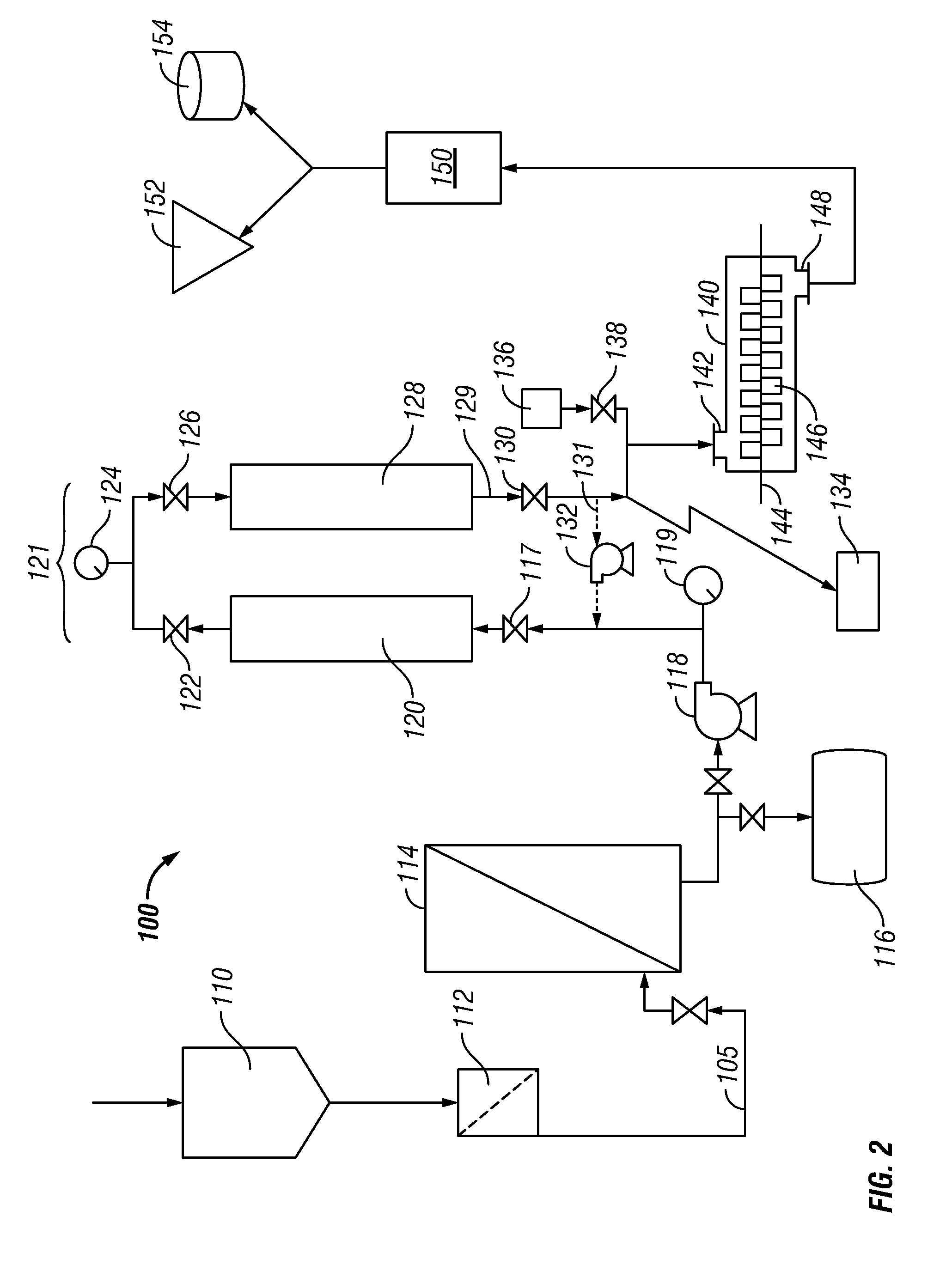Process for Producing High-Purity Sucrose
a technology of high-purity sucrose and process, which is applied in the direction of sucrose extraction by chemical means, lactose production, maltose production, etc., can solve the problems of not being suitable for direct use as food, many methods, and relatively expensive implementation, and achieves low viscosity sucrose, low viscosity, and low viscosity
- Summary
- Abstract
- Description
- Claims
- Application Information
AI Technical Summary
Problems solved by technology
Method used
Image
Examples
example 1
Preparation of Samples
[0050]Four feed-stream sugar products for use in the process were obtained from a variety of sources, and were diluted with water (SugarLand, Tex., tapwater or deionized water) to a feed stream concentration of about 50 wt. % solids (±5 wt. %). In a typical procedure, approximately 725 lbs of the raw feed-stream sugar product was prepared by weighing the granulated sugar product into a plastic pail or appropriate container, and then diluting / dissolving the granulated sugar (with stirring) to the appropriate solids concentration (e.g., 50% solids) and viscosity using water. Once dissolution had been achieved, the feed stream products for the purification process were transferred to a feedtank that was in fluid communication with the purification plant assembly generally illustrated in FIG. 1. Exemplary ICPMS data for the starting feedstock used in the example—granulated sugar, char liquor, liquid sucrose, and medium sucrose invert fluid—are presented in Table 1,...
example 2
Plant Purification Procedure
[0053]To the feed stream product prepared as described above was inserted a pump inlet tube, the pump and pump controller were turned on and adjusted to a flow rate between about 0.05 gpm and 0.20 gpm, and the valves of the purification system were opened, from the final discharge valve to the inlet valve for the cation exchange inlet, adjusting and monitoring system pressure as appropriate. At this point, the pump transfers the feed stream product through an optionally-included filter assembly with a sizing screen to ensure solution particle size and remove any large fines that may be present, after which the feed-stream is transferred to the inlet of the cation exchange column. As the solution continues to move through the system, the discharge valve to the system was monitored hourly and a degree brix determination is made to monitor the displacement of water in the system by the feed-stream solution. When the discharge had a value of about 20 brix, th...
PUM
| Property | Measurement | Unit |
|---|---|---|
| temperature | aaaaa | aaaaa |
| viscosities | aaaaa | aaaaa |
| viscosities | aaaaa | aaaaa |
Abstract
Description
Claims
Application Information
 Login to View More
Login to View More - R&D
- Intellectual Property
- Life Sciences
- Materials
- Tech Scout
- Unparalleled Data Quality
- Higher Quality Content
- 60% Fewer Hallucinations
Browse by: Latest US Patents, China's latest patents, Technical Efficacy Thesaurus, Application Domain, Technology Topic, Popular Technical Reports.
© 2025 PatSnap. All rights reserved.Legal|Privacy policy|Modern Slavery Act Transparency Statement|Sitemap|About US| Contact US: help@patsnap.com



